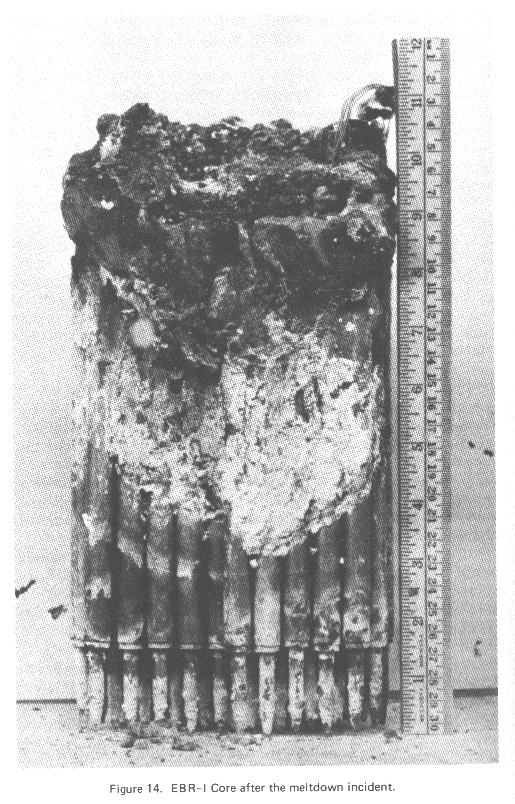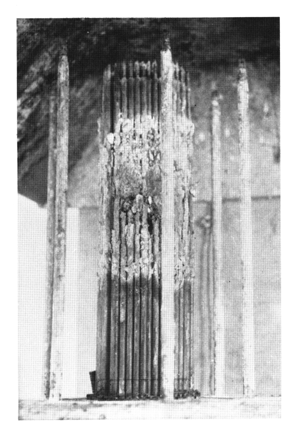
Spent Fuel: Barely-used nuclear reactor cores.
A typical commercial nuclear reactor produces about 250 pounds a day of so-called High Level Radioactive Waste, aka Spent Fuel.
Below is an illustration of a typical Boiling Water Reactor fuel assembly:

-- Above image is from a Nuclear Mafia web site.
----------------------------------------------------------
NUCLEAR REACTOR CORES only last between two and six years in a reactor. After that, they are too irradiated with daughter products to make money for their owners, so the owners give them back to US (you and me; i.e., the government). The reactor cores are NOT in the same condition they started in! They are millions of times more dangerous.
The reactor cores remain "the most deadly stuff on earth" for about a million years. First, the reactor cores are placed into Spent Fuel Pools to cool. Originally, the public was told that these were to be temporary storage facilities. But it must not have been much of a surprise to the nuclear power companies when these "temporary" facilities gradually became permanent storage areas, because they were originally configured to hold at least 20 years' worth of barely-used reactor cores (such as the one shown above), even though the fuel supposedly only needs to stay in the pool for about five years before it can be moved.
After being in the pool, the reactor cores are placed in Dry Storage Casks. After that, no one knows what might happen. Some say it will all be sent to Yucca Mountain, but that is unlikely.
----------------------------------------------------------
Here is some fuel that partially melted in a reactor in Idaho:

-- Above image is from: The Accident Hazards of Nuclear Power Plants, by Richard E. Webb, Univ. of Massachusetts Press, Amherst, page 190, 1975, 1976. (According to Webb, page 188, what you see here could have been much worse: the EBR-1 reactor was within half a second of a nuclear excursion (i.e., an explosion equivalent to between 1 and 100 pounds of TNT) when it was successfully SCRAMed. EBR-1 was a small, experimental reactor. A commercial reactor in a similar situation would explode with the equivalent of about 20,000 lbs. of TNT.)
This is from the same accident, and appears to be a different fuel bundle:

-- Above image is from: Controlling the Atom: The Beginnings of Nuclear Regulation, 1946-1962, by George T. Mazuzan & Samuel Walker, photos following page 244, Univ. of Calif. Press, 1984. (The caption states that the photo is from the National Archives and is of the "Damaged core caused by power surge in AEC's Experimental Breeder Reactor, November, 1955.)
----------------------------------------------------------
Copyright (c) 2002 by Russell D. Hoffman. All Rights Reserved